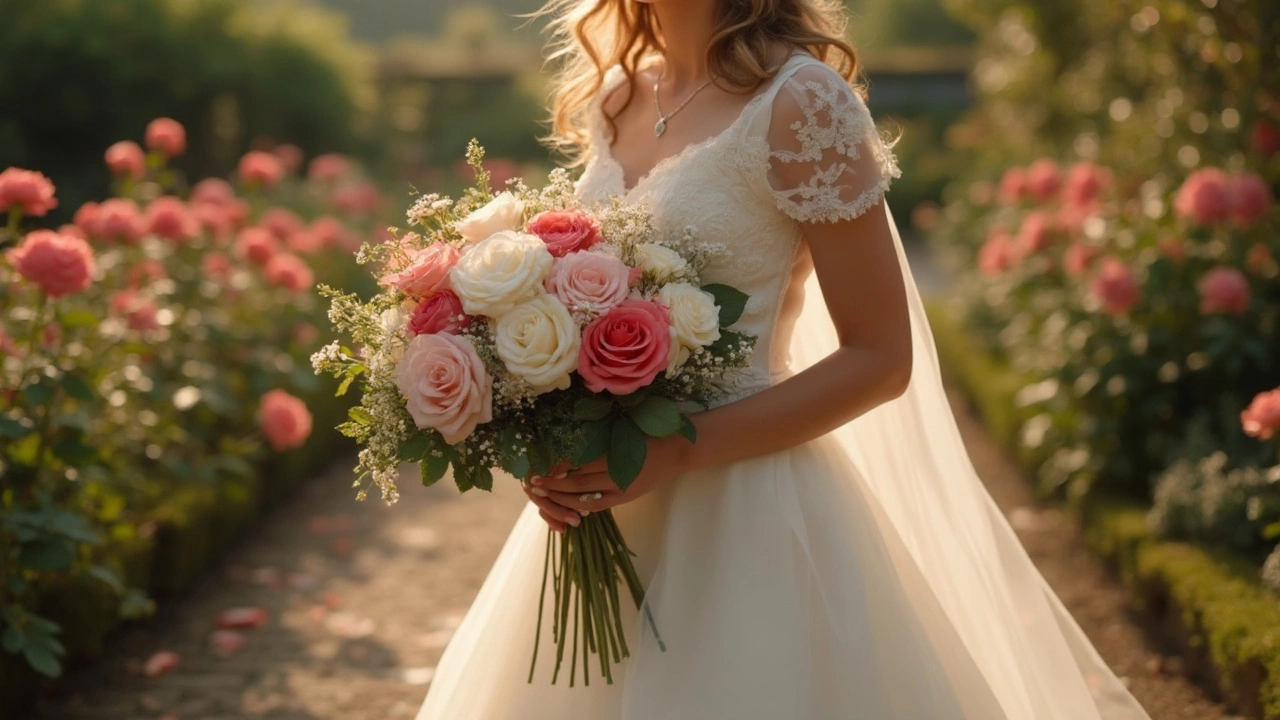Popular Wedding Flowers: Choose the Right Blooms for Your Day
If you’re scrolling through Instagram and wondering why everyone’s wedding looks so fresh, it’s the flowers. The right bouquet can add color, scent, and personality to your ceremony. Below you’ll find the most‑liked blooms, why they work, and quick tips to match them with your dress, venue, and budget.
Classic Favorites That Never Go Out of Style
Roses are the go‑to for a reason. Their soft petals and endless color range fit traditional and modern looks alike. Pair white roses with a lace gown for an elegant vibe, or mix pink and burgundy for a romantic feel. They’re easy to find year‑round, so they stay affordable.
Peonies bring big, fluffy texture that feels luxurious. They bloom best in late spring, so if your wedding is in May or June, they’re a natural choice. Their pastel shades work great with soft palettes, but deep‑red peonies can add drama for a fall wedding.
Hydrangeas offer volume without a high price tag. Their round heads fill space, so you need fewer stems for a full look. They come in blues, purples, and whites, making them perfect for garden or beach venues.
Lisianthus look like delicate roses but cost less. Their subtle ruffles add a gentle texture that pairs well with larger flowers like roses or peonies. Choose white lisianthus for a clean, modern vibe.
Ranunculus are a hidden gem. Their layered petals give a lush look while staying lightweight. They’re great for cascading bouquets or bridal crowns because they don’t droop easily.
Trending Blooms for Modern Weddings
Succulents have moved from décor to bouquets. Their sculptural shape adds an unexpected edge, especially for minimalist or boho themes. Mix them with greenery for a low‑maintenance, long‑lasting arrangement.
Anemones feature a dark center that pops against soft petals. They’re perfect for a vintage‑inspired wedding where you want a hint of drama without going overboard.
Eucalyptus isn’t a flower, but its silvery leaves are a favorite filler. It works with just about any bloom and adds a fresh, aromatic touch.
Protea brings a bold, tropical feel. Their large, sculpted heads are ideal for summer or destination weddings where you want a statement piece.
Garden roses give a slightly wild look compared to classic roses. Their loosely formed petals fit relaxed garden parties or rustic barns.
When picking flowers, think about three things: the season, your colour scheme, and the venue’s vibe. Seasonal blooms are cheaper and fresher, so match your wedding month with the right flowers. If your palette is navy and gold, choose deep‑red roses or dark anemones for contrast. For a beach setting, lean on white lisianthus, eucalyptus, and succulents to keep the look breezy.
Finally, talk to your florist early. Bring photos of dresses, décor, and colour swatches. A good florist will suggest alternatives if a flower is out of season or over budget. They can also advise on stem count—generally, 2‑3 stems per person for a seated dinner, fewer for a standing cocktail.
With these popular choices in mind, you can build a bouquet that feels personal and fits the overall style of your wedding. Remember, the best flowers are the ones that make you smile when you hold them, so trust your gut and enjoy the process.

- Feb, 24 2025
- Comments 0